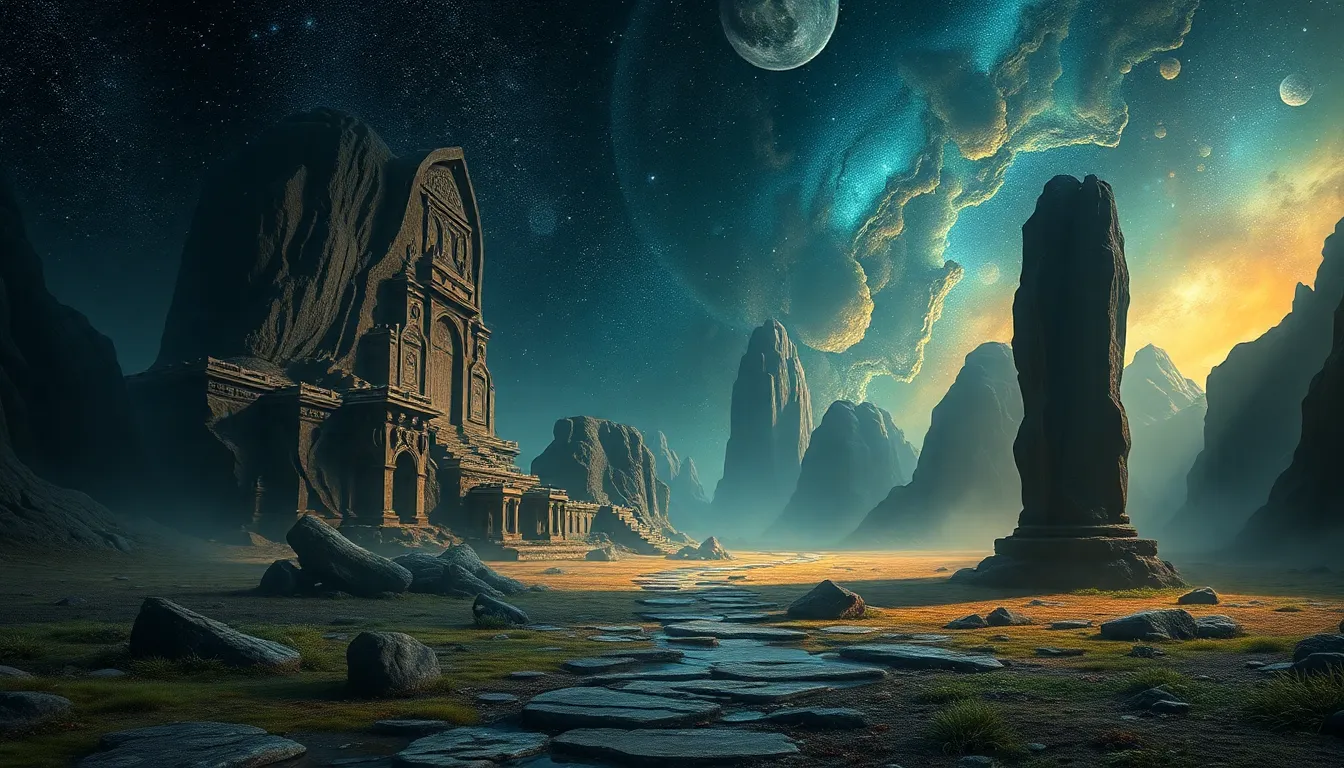The Mythical Dimensions: Exploring Sacred Places Beyond Our World
Introduction to the Concept of Mythical Dimensions
Throughout history, humanity has been fascinated with the concept of mythical dimensions—places that exist beyond the mundane world, rich with spiritual significance and cultural importance. These sacred spaces serve as a bridge between the material and the spiritual, offering individuals a glimpse into a reality that transcends everyday existence. From ancient temples to natural wonders, these sites have been revered for their ability to connect people with the divine, the mystical, and the unknown.
Historical Perspectives on Sacred Spaces
Ancient civilizations across the globe have established sacred sites that reflect their beliefs, values, and understanding of the universe. For instance, the Egyptians built the pyramids as monumental tombs, believing they would facilitate the deceased’s journey to the afterlife. Similarly, the Greeks honored their gods with temples on sacred mountains, such as the Acropolis in Athens.
The idea of sacredness has evolved significantly throughout history. In many cultures, it was once tied closely to the natural world, with places like forests, mountains, and rivers considered to be imbued with spiritual power. As societies advanced, the construction of man-made structures became more prevalent, yet the underlying connection to the divine remained.
Mythical Landscapes in Different Cultures
Exploring mythical landscapes reveals a rich tapestry of stories and beliefs across various cultures. Some notable examples include:
- Mount Olympus: In Greek mythology, the home of the gods, symbolizing divine authority and power.
- Avalon: A mystical island in Arthurian legend, associated with healing and magic, often seen as a paradise.
- Asgard: In Norse mythology, the realm of the gods, representing strength, valor, and the warrior spirit.
These landscapes share common characteristics, such as their connection to the divine and their role as a setting for significant mythological events. They often serve as metaphors for human aspiration, reflecting the desires and fears of the cultures that venerate them.
The Role of Nature in Mythical Dimensions
Nature plays a crucial role in the conception of mythical dimensions. Mountains, rivers, and forests are often seen as sacred entities, imbued with spiritual meaning. For example, the majestic peaks of the Himalayas are revered in Hinduism as the abode of the gods.
Specific locations like Stonehenge and Machu Picchu exemplify how natural features can become focal points of spiritual significance:
- Stonehenge: This prehistoric monument in England is aligned with the solstices, suggesting a deep understanding of celestial cycles.
- Machu Picchu: Nestled in the Andes, this Incan citadel is believed to have held religious significance and was designed to harmonize with its natural surroundings.
Religious Practices and Rituals in Sacred Places
The rituals performed in these mythical dimensions vary widely, yet they often share the goal of fostering a connection between the participants and the divine. Common practices include:
- Offerings and sacrifices to appease deities.
- Pilgrimages to sacred sites as an act of devotion.
- Ritualistic ceremonies to mark seasonal changes or significant life events.
These practices not only reinforce cultural identity but also strengthen community bonds, as individuals come together in shared beliefs and traditions.
Modern Interpretations of Sacred Spaces
In contemporary society, there is a resurgence of interest in mythical places, as individuals seek deeper meaning in their lives. New spiritual movements often draw inspiration from ancient traditions, leading to a revitalization of interest in sacred spaces.
Technology and media play a pivotal role in reshaping perceptions of these sites. Virtual reality experiences and documentaries allow people to explore these mythical dimensions from afar, fostering a sense of connection and curiosity.
The Intersection of Myth and Science
The exploration of alleged sacred sites has also attracted scientific interest. Concepts such as ley lines and energy fields are subjects of research, with some scientists investigating the geographical and astronomical alignments of these locations. The intersection of myth and science opens the door for a dialog between spiritual beliefs and empirical evidence, suggesting that both realms may offer insights into the nature of reality.
The Psychological Impact of Sacred Places
Visiting mythical dimensions can have profound mental and emotional benefits. Individuals often report feelings of peace, awe, and connection to something greater than themselves. Personal testimonies reveal how these experiences can lead to transformative insights and a renewed sense of purpose.
Some common psychological benefits include:
- Reduction in stress and anxiety.
- Increased feelings of belonging and community.
- Enhanced spiritual awareness and personal growth.
Challenges Facing Sacred Places Today
Despite their significance, many sacred places face challenges such as commercialization, mass tourism, and environmental degradation. The influx of visitors can lead to the erosion of these sites and a dilution of their spiritual essence.
Preserving these cultural treasures requires a collective effort to respect their significance and protect them from harmful practices. Sustainable tourism initiatives and community involvement are essential in ensuring that these places continue to inspire future generations.
Conclusion: The Continuing Relevance of Mythical Dimensions
Mythical dimensions remain deeply relevant in modern life, influencing spirituality and cultural identity. They invite us to explore the mysteries of existence and connect with our shared human heritage. As individuals, we can take action by seeking to understand and respect these sacred places in our own lives.
Whether through pilgrimage, exploration, or education, each of us has the opportunity to engage with the mythical dimensions that resonate with our personal beliefs and experiences. By doing so, we honor the timeless significance of these sacred spaces and keep their legacies alive for future generations.




